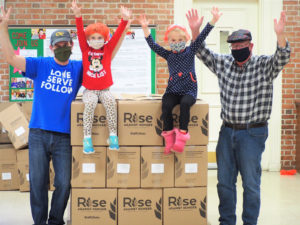“An Ever-Shifting, Ever-Expanding Purple Tent”
Severna Park United Methodist Church
Severna Park, MD
By Deborah Jodrey
 In response to what drew him to Severna Park, the lead pastor of the church, Rev. Ron Foster, responded with what he sees as part of his call as a pastor at Severna Park—working as a bridge builder, expanding the tent, lifting up the voices of youth in their congregation, and creating spaces to have tough conversations. In my interview and focus group with the laity, I heard very similar sentiments around who Severna Park strives to be, especially in regard to their identity as both a “big tent” and ideologically diverse space. This also rings true in the amount of work the leadership has done to create these spaces for conversations around race, queer inclusion, and scripture that perhaps otherwise wouldn’t be happening for these folks. One lay leader shared how valuable and vital the space for these conversations is, even in the difficult moments, when they shared how, “it’d be much easier to go to a place where everybody already thought the same way I did, but then there wouldn’t be that discourse.”
In response to what drew him to Severna Park, the lead pastor of the church, Rev. Ron Foster, responded with what he sees as part of his call as a pastor at Severna Park—working as a bridge builder, expanding the tent, lifting up the voices of youth in their congregation, and creating spaces to have tough conversations. In my interview and focus group with the laity, I heard very similar sentiments around who Severna Park strives to be, especially in regard to their identity as both a “big tent” and ideologically diverse space. This also rings true in the amount of work the leadership has done to create these spaces for conversations around race, queer inclusion, and scripture that perhaps otherwise wouldn’t be happening for these folks. One lay leader shared how valuable and vital the space for these conversations is, even in the difficult moments, when they shared how, “it’d be much easier to go to a place where everybody already thought the same way I did, but then there wouldn’t be that discourse.”
I got to see first-hand examples of folks engaging with each other despite differences at a Bible Study I attended titled “Bible 101.” Rev. Ron, a white man in his fifties, was teaching this weekly class in order to introduce the Bible and biblical interpretation. The high level of engagement began right away with the casual and easy conversation people were having when I joined the study, and this continued in the opening small group discussion, the chat feature, and what was discussed back in the big group, as prompted by Rev. Ron. I was also impressed with how there were about 25 people participating in this online Zoom Bible study on a Wednesday night. Of the folks present, there were mostly women and a few couples, and I would say most were over the age of forty. Throughout the study there were almost immediate responses to the questions Rev. Ron asked. Along with that, folks were also not shy in raising their own questions, like why the gospels are arranged in the order they are and how we can even know these stories if Jesus told his disciples not to tell anyone. I also observed a strong level of non-verbal participation, engagement, and respect in conversations with one another. Through these moments of consistent verbal and non-verbal engagement, it was easy for me to see that people cared about what Rev. Ron was teaching and that they were eager to learn and not afraid to share their own thoughts, answers, and questions. Even when they shared differing impressions and opinions, there was a high level of respect. In my interview with Rev. Ron that next week, he explained that making safe spaces within their church for tough conversations is important in their congregation because, as he put it, “we’ve got very avid, passionate people on all sides of the political issues right now.”
This internal struggle around their identity as a “big tent” has left me wondering if striving to be a “big tent” is an appropriate goal for a church to have. How can Severna Park work out these internal differences in a way that is faithful and stays grounded in their identity as a United Methodist Church? What can other purple churches across the country learn from Severna Park in regard to keeping folks connected and engaged in the midst of extremely contentious conversations? How have the voices and presence of the youth at Severna Park helped them pursue their vision of being a “big tent”? Has COVID-19 enhanced or stifled the church’s ability to have tough conversations? And lastly, what is the nature of the confidence that Severna Park has as United Methodist in the midst of all the turmoil and impending division of the United Methodist denomination?
In one of my conversations, a Severna Park lay leader explained how ongoing debates within the global UMC denomination and upcoming decisions around LGBTQIA inclusion has equipped them for their own conversations as a church around this topic and allowed space for them to “also [jump] feet-first into asking hard questions about the racial discord.” As this lay person put it, “our church already established a pattern of inviting people in to have hard conversations, diving into scripture to address those issues, trying to create safe spaces for communication.” Like this lay person, I wonder if the ongoing turmoil within the UMC denomination as a whole has been part of what has equipped Severna Park for navigating these internal conflicts in a faithful way. They are no stranger to asking hard questions, engaging in tough conversations, and valuing the voices of their youth. Perhaps this background equips them to stay focused on continuing “to push the tent wider and make the family bigger even with the impending decisions around the global UMC.” Perhaps it is their very identity as United Methodist that has developed a unique ecclesial imagination and helped them navigate the tensions and gifts of their ever-shifting and ever-expanding purple tent.
With a strong sense of who they are as a United Methodist Congregation with a Wesleyan identity, Severna Park United Methodist Church is located in Severna Park, MD, about 10 miles north of the state capital. Founded in 1965, it is a predominately White congregation with 1,400 members, about 500 of which attend on a typical Sunday morning. As a result of its location, there is a strong National Security Agency and military-related presence among the congregation. You don’t have to look far on the church’s website to see a statement that captures the rich and complex identity they hold as an ideologically diverse congregation striving to create safe spaces for tough conversations while being an authentic community. As their website explicitly shares: “We strive to be a big tent kind of church that welcomes people of diverse backgrounds, differing theological and political perspectives and varied life experiences.” I would argue that this part of their mission statement is being faithfully pursued both by the presence, perspective, and stories of the youth and the ability of the pastors and leaders at UMC to serve as bridgebuilders.
Severna Park takes seriously the youth in their church. The way folks talked about the youth, youth programming, and their power-house youth minister, Rev. Lee Ferrell, made it clear to me that this is not just a side operation, but something that is at the heart of who they are and a huge part of their ecclesial imagination and their identity as a “big tent.” In almost every conversation I had with folks, the topic of youth came up. Whether it was the reason they started coming to Severna Park, or because of the impact that the youth have had on their own spiritual journey and life at Severna Park, or both–youth were referenced! Rev. Ron shared that the “amazing youth program” is one the main appeals that Severna Park had when he first considered serving as the lead pastor. He also shared how clear it continues to be to him that this congregation loves and supports their youth. Rev. Ron also shared the immense value that Rev. Lee brings, not only to the youth, but to the entire church, in the work of building trust and creating spaces for difficult conversations across the board. Rev. Ron explained:
I value what she does and the constituency that she’s built up and the people, you know, the layers and layers of trust and relationship that she has. . . She is a fabulous part of the team and I would say the way that we try to navigate these issues is to try to create safe space for real conversation and not be afraid to talk about stuff.
Carole, a middle-aged White woman, told me that she first started attending Severna Park in the second grade because her godparents knew of the high-quality youth and children’s programs. A similar sentiment was shared from several other folks in the focus group: they were first drawn to Severna Park because of the programming opportunities for their own children and grandchildren, a desire to find a good church to raise their kids in, and because of Rev. Lee Ferrell, who Betty, a faithful congregant since 2007, sees as “a driving force . . . a constant.”
The most striking example of the immense value of youth at Severna Park comes from a story that Rev. Ron shared with me about a young woman in their youth group. He started this story by explaining that Appalachia Service Project (ASP) has been a part of Severna Park’s DNA for the last 35+ years. One year, this young woman joined them on that year’s service project and came back with, as Rev. Ron puts it, “one of the most thoughtful testimonies I’ve heard, from an adult or a youth, about what it means to be in solidarity with other people, not just in mission to somebody, but to be in mission with.” Rev. Ron went on to explain that her testimony exemplified a shift that he has been hoping to see at Severna Park in regard to what it means for this church to serve. He told me that this paradigm shift came from a youth and is part of an ongoing broader conversation happening at Severna Park to really ask tough questions around being in ministry with folks and how “to serve with great humility and with listening hearts.” Rev. Ron went on to share how he saw this testimony speak to “the power of transformational love and transformational service.” Along with this story of leadership and wisdom, Rev. Ron continued to talk about how hard the church has worked to center and integrate the voices of their young people even more than just an occasional youth Sunday. Ultimately for Rev. Ron, “thriving will be continuing to really invest in our youth and our children.”
A second theme I have seen emerge from Severna Park has to do with the leadership’s ability for bridge-building. There are already clear examples of this in the focus on youth and the amazing leader Severna Park has in Rev. Lee. It seems clear to me that in order for the tent to shift and expand, there have to be opportunities for conversations, growth, and at times, compromise. As for their ability to have difficult conversations, I have seen the ability to create spaces for these discussions ingrained in the roles of the pastors and leaders at Severna Park. Rev. Ron was not shy in talking about the way in which the church has wrestled with “the concept of being an antiracist church.” He explained that the problem was not that the church didn’t want to be committed to antiracism work, but in trying to figure out how to do that in a way that represents all the diverse perspectives in the church. Rev. Ron explained that he and the other leaders have tried to approach this topic in a more holistic and balanced way. He explained, “My view of ministry [is] you don’t beat people over the head with stuff. You nurture, you challenge, you’re not afraid to speak truth, but you do it in a holistic way . . . in a balanced way, not being afraid to speak out and take stands.”
In an interview with a lay leader, there seemed to be both frustration around this more balanced approach to their pursuit of making their antiracism stance clear and a recognition that it makes the most sense for their congregation. She shared how the Church Council, appropriately so, is “pretty representative of the diversity of views in our church,” and because of that, the conversation wound up being more contentious, difficult, and exhausting than perhaps she would have hoped. She explained how hard they worked to both share their desire to be an antiracist church and to express that in a way that represents their specific congregation. The effort was not without fruit: “Eventually we had a follow up meeting where a statement was crafted that was sort of like, here’s where we are, and we want to accept it. It was a big tent statement, and it was beautifully written.”
The work that the leaders at Severna Park are doing is clearly making a difference, as I learned from one congregant who shared how impactful the Race and Faith group has been for her. Becky, a middle-aged white woman, stated how vital it is to have space to do this work, and even as she spoke, several other folks were nodding their heads in agreement. She ended her thought with, “I just feel like that really speaks to me, . . . these times to have a faith community where we can discuss issues that are so important in our community and our country [and] our world.”
Another area that Severna Park has put a lot of heart, sweat, and tears into has been the conversation around LGBTQ inclusion that has been taken place in the United Methodist denomination as a whole. The conversation is also very present in their own congregation. Rev. Ron shared how raw he was leading up to the General Conference in 2019. He spoke with real vulnerability, telling me how he cried in his sermon after a more traditional plan was adopted at the conference. Despite the decision at the General Conference, he and other leaders in the church have been adamant about opening up space for conversations on the issue and scriptural interpretation as a whole, providing opportunities to “push the edges of this conversation.” Rev. Ron told me that at the end of these difficult conversations, they unexpectedly had some folks come away saying, “Huh, I never looked at the Bible that way. I never knew that you could believe in a more affirming God.” Even though a few folks ended up leaving the church over this, “most people stuck around and stuck in the conversation.”
To Rev. Ron, this was a sign that they were doing something right. I didn’t have to only take Rev. Ron’s word for it, either. A lay leader also shared about how highly she thought of the way in which the pastors handled both the global and their local UMC decisions around LGBTQ inclusion. She pointed to the exact same Bible study that Rev. Ron mentioned, where he and another pastor opened up space for questions and raw emotions to be present. At the end of it, this lay leader believed that she witnessed a series of discussions that were “very worshipful and very spirit-filled and very respectful,” and how she saw “God working through those leaders.”
This desire to build trust and create spaces for growth also extends to the ministry opportunities that Severna Park offers. I saw this piece of Severna Park’s identity come through in something shared by one of the lay people in the focus group I held. April, a younger white woman with dark hair, did not hold back in sharing both beautiful and difficult aspects of the church pertaining to the growth she has seen in the church around their ministries. This came up after I asked for some memories and moments that really capture who Severna Park is. April shared a sense of pride for the church and the work they have done around providing diverse ministry opportunities that allow folks in all stages of life to jump into serving. She was also proud of opportunities like their homeless ministry, which draws folks outside their comfort zones and really allows the Holy Spirit to work in their lives. As April so beautifully put it:
The reason this strikes me so deeply is because . . . we’re a suburban congregation in an affluent area, mostly white, [and] the folks who were coming in for Winter Relief demographically are typically very different from us, from most of the members of the congregation, with all kinds of life challenges and problems. And so I know for a lot of people in our congregation serving in Winter Relief is outside their comfort zone and we do it anyway. . . I think that one of the things that it is so striking to me about what our church does well is provide those opportunities for people to step out of their comfort zone in service to others and out of devotion to or commitment to, or inspiration from God and the Holy Spirit. . . Seeing everybody lean into that [creates] memories and stories that really speak to who we are as a congregation. It also, going back to your earlier question, really show[s] God actively working in the congregation so that we can all stretch and grow and look at how we can be those hands and embrace of God in the world.
While these are clear examples of the leaders in the church opening spaces for intense conversations and even pushing folks in their congregation outside of their comfort zones, I know that Rev. Ron has also expressed the need for a balance, for space for all voices, for compromise, and ultimately for the wisdom to know when to push and when to let up a bit. One congregant, after prefacing again how hard the leadership at Severna Park works “to create a sense that we are a big tent and all are welcome under the tent,” noted that there are times where compromise has been the better option for them. Most recently, this value of compromise arose on the topic of the American flag in the sanctuary. She told me how at one point, the pastors decided to remove the flag for the season of Lent without much discussion. After more than six months of it being gone and almost no comments or conversation, there was some outrage, both around the decision and lack of conversation around the decision. She explained how at the end of the day, the pastors decided to put the flag back in the sanctuary with the compromise that for certain seasons like Holy Week and Advent, the flag will be moved off to the side. This lay leader explained that the pastor likely realized that this is not the hill to die on and that as a church they needed to focus on more important things.
In the midst of these tough conversations, opportunities for growth, and moments for compromise, I see the sincere and hard work of the leaders of Severna Park in play, balancing when to push and when to move on. This seems to work in Severna Park because of their valuing of diverse voices, the work they have done as part of the United Methodist denomination, leaving space for the Holy Spirit to work, and the dedication of the leaders in the church to listen, learn, and care for each individual present in their church.
Responding to the problem of churches often being unable to handle theological and political differences, Severna Park UMC has resisted the temptation to become monolithic and has instead striven, in the midst of their own internal struggles and through their own unique sense of ecclesial imagination, to be a “big tent” kind of church where differences, specifically ideological differences, are embraced and engaged as a part of their broader mission to “Love. Serve. Follow.” In order to respond to this problem, Severna Park has worked to uplift the voices and wisdom of their youth, and they have created safe spaces and trust for tough conversations and growth. They also recognize the need and value of compromise, collaboration, and their youth in order for different voices and perspectives to be expressed and included as a part of decisions made at the church. This is important because if Severna Park wasn’t working to create these spaces for tough and divisive conversations, there most likely wouldn’t be other places for folks to learn, grow, and potentially change on an issue based on the stories and faces of the folks sitting in front of them in that conversation. I believe it is because of who they are as United Methodists and who they are as a local purple church that they have been equipped and prepared to navigate the difficult conversations that have arisen due to COVID-19. One congregant shared how incredible it has been for him to witness the way that God has been working in their congregation and given them the courage they need to make difficult decisions in order to keep folks safe. It is because of Severna Park’s ecclesial imagination, that is, their willingness to have the difficult conversations, their passion for the voices and experiences of their youth, and their ability to allow the Holy Spirit to move in their lives that they will continue to thrive. In this way, as one congregant put it, they will “[become] a place of welcoming to all, reconciliation in a time of political turmoil, a big tent, and [so carry] God’s message out into the world, being servants of God out in the world . . . in all kinds of contexts.”


